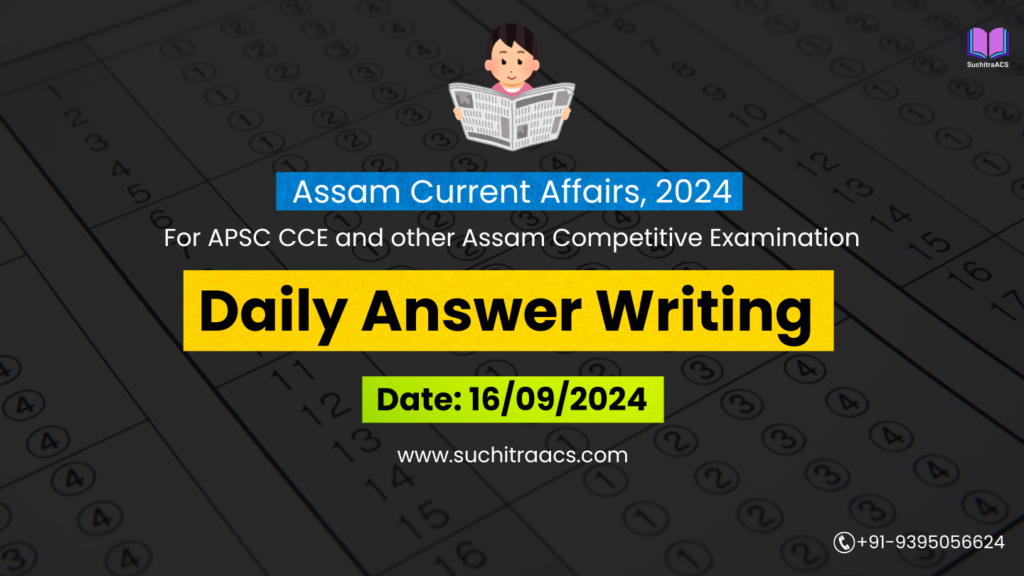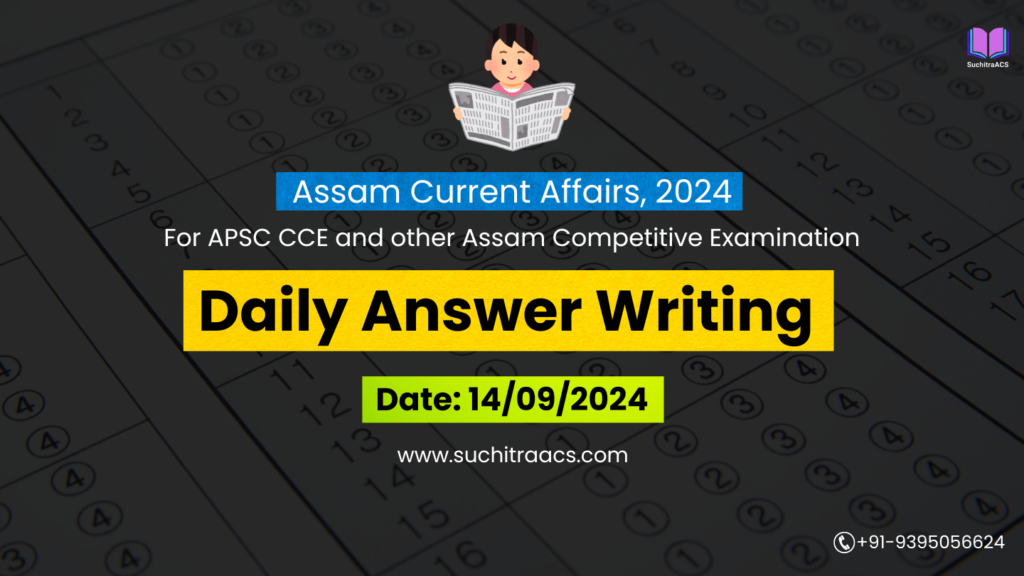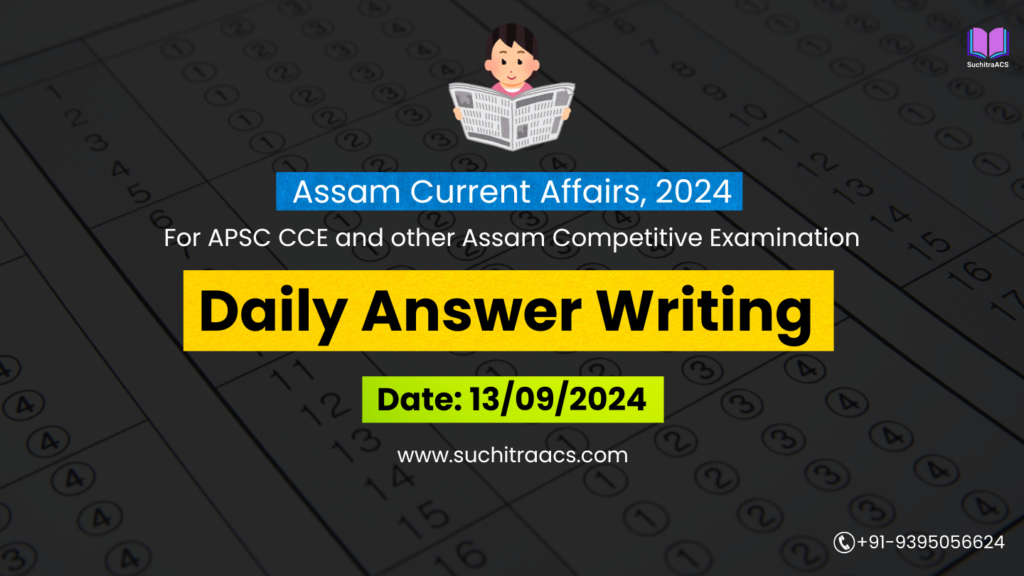APSC Answer Writing (Daily) based on Assam Tribune – 13/11/2024
For APSC CCE and other Assam Competitive examinations aspirants, practicing Daily Answer Writing is vital. This blog covers the most important Main question and its model Answer from the Assam Tribune today (13-11-2024).
Topic: Challenges in Managing Urban River Pollution in India
Question: Urban river pollution is a growing environmental crisis in India, impacting public health, biodiversity, and urban development. Discuss the main causes of urban river pollution with reference to rivers like the Bharalu in Guwahati. Suggest effective measures to restore and sustainably manage urban rivers. (250 words)
Model Answer:
Introduction:
Urban river pollution is a critical environmental issue in India, posing risks to human health, ecosystems, and urban sustainability. Rivers like the Bharalu in Guwahati have transformed from natural water bodies into polluted drainage channels due to urban encroachments and inadequate waste management systems.
Body:
Causes of Urban River Pollution:
- Industrial Effluents: Unregulated discharge of untreated industrial waste directly into rivers contributes to high levels of pollutants, including heavy metals.
- Sewage Disposal: Limited sewage treatment infrastructure leads to raw sewage being dumped into urban rivers, increasing organic and chemical pollutants.
- Encroachment: Illegal structures along riverbanks reduce water flow and increase pollution, limiting riverine ecosystem functioning.
- Solid Waste Dumping: Lack of effective waste management leads to garbage being dumped into rivers, blocking water flow and harming aquatic life.
- Public Apathy: Limited awareness and poor civic responsibility contribute to unsustainable waste disposal practices.
Measures for Restoration and Sustainable Management:
- Sewage Treatment Expansion: Invest in sewage treatment plants to ensure waste is treated before discharge.
- Strict Enforcement of Regulations: Enforce existing environmental laws strictly to prevent industrial and household dumping.
- Community Engagement: Conduct awareness campaigns to educate the public on the importance of clean rivers and sustainable practices.
- Riverfront Development: Transform riverfronts into green spaces, reducing encroachment and promoting recreational use.
- Regular Monitoring and Dredging: Implement regular monitoring and scientific dredging to maintain river depth and flow.
Conclusion:
Restoring urban rivers like the Bharalu requires a multi-faceted approach that combines regulation, community involvement, and infrastructure development. Sustainable urban river management is essential for preserving public health, supporting biodiversity, and enhancing the quality of urban life.
✨ Looking for top-quality APSC Mains Guidance with Personalised Mentor?

🔔 Join Our WhatsApp Study Group!
For exclusive access to premium quality content, including study materials, current affairs, MCQs, and model answers for APSC CCE and other Assam competitive exams.
Click here to join: SuchitraACS Study WhatsApp Group
📚 Want to know more about SuchitraACS’s most affordable courses?
Click here to know more: SuchitraACS Courses for APSC CCE and Assam Competitive Examinations




